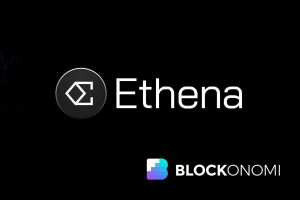Ethereum 2.0’s staking contract becomes largest ETH holder

Recently, the Ethereum network reached a new staking milestone. On Aug. 17, the Ethereum 2.0 staking contract became the single largest holder of Ether (ETH), surpassing Wrapped Ether (WETH). According to data from Etherscan, the Eth2 deposit contract now holds over 7.14 million Ether tokens, valued at $23 billion at the time of writing.
This accounts for nearly 6.1% of all Ether tokens in circulation, which means that the staking rate for Ethereum is now over 6%. The Wrapped Ether deposit contract comes in second, holding 6.97 million tokens — i.e., 5.94% of all Ether. Data from Beaconcha.in reveals that there are now 217,354 validators on the Ethereum network.
Right away, this has made Ether the third most staked cryptocurrency. According to data from Staking Rewards, the Ethereum 2.0 deposit contract ranks third, just after Cardano and Solana, which have been proof-of-stake (PoS) blockchains since their inception. In contrast to the $23 billion in ETH staked, there is over $26 billion worth of SOL staked and $63 billion in ADA staked on their respective networks.
Pete Humiston, manager of Kraken Intelligence — the research department of the Kraken exchange — told Cointelegraph about these different blockchains:
“Ether’s market cap is well over $350 billion: many multiples above both Solana and Cardano. SOL and ADA may well have a larger share staked compared to the 5.7% of ETH on ETH 2.0, but the sheer size of Ethereum means it is all but inevitable it will surpass both as ETH 2.0 continues apace.”
Ether staking only in nascent stage
Ether staking is already reaching milestones and is rising through the ranks, even though staking on the Ethereum network is still in its nascent stage. All the Ether currently deposited in the Eth2 deposit contract is locked and can be withdrawn only after the Beacon Chain merges into the main Ethereum network — the final stage of its transition to a PoS consensus mechanism.
Rick Delaney, senior analyst at OKEx Insights — the research team at cryptocurrency exchange OKEx — spoke with Cointelegraph regarding whether the transition could end up being slowed down. He stated:
“A few factors are likely to slow uptake, including the requirement to lock capital on the Beacon Chain, centralized staking service risk, ETH’s more expansive DApp [decentralized application] ecosystem enabling additional opportunities to generate returns and the protocol risk accompanying any major network upgrade.”
This staking milestone for Ethereum comes on the heels of a major event in the transformation of the blockchain, the London hard fork. The London upgrade went live on the network on Aug. 5, bringing in the highly anticipated Ethereum Improvement Proposal (EIP) 1559, along with four other EIPs: EIP-3554, EIP-3541, EIP-3198 and EIP-3529.
EIP-1559 brought a change in the transaction pricing mechanism that eventually reduced the inflation rate of the token and decreased miners’ revenues from transaction fees. This upgrade is the penultimate step leading to the final merge of the Eth1 and Eth2 chains scheduled for 2022.
Related: Ethereum’s London hard fork sets ETH on a more deflationary path
Humiston mentioned that the reduction in ETH’s inflation makes it a much more scarce asset than it would have been otherwise. The inflation schedule will change yet again once the final transformation to PoS takes place. He said:
“If the ETH burned offsets that issued under PoS, ETH will become a deflationary asset. Should demand stay at current levels, then we can assume that the price of ETH will likely rise, all else remaining constant.”
This price increase could lead to a positive feedback loop, as a higher price could give a push to innovation and development within the ecosystem, which would then lead to greater network usage and entail that even more ETH is burned under this EIP. In addition to the reduction in selling pressure on ETH over the short- to mid-term leading to higher ETH prices, there are other aspects that need to be considered.
Delaney pointed out that miners currently sell ETH to cover their electricity and hardware costs, but once the network is entirely secured by stakers, even the miners will be incentivized to hoard ETH. He said, “Meanwhile, network users’ ETH will disappear from circulation via 1559’s burn mechanism. While the resulting supply shock will likely send ETH to the proverbial moon, it may have a centralizing effect on the network’s validator structure and wealth concentration.”
CEO of on-chain analytics service CryptoQuant, Ki Young Ju, mentioned in a tweet that a sell-side “liquidity crisis” could push ETH past Bitcoin (BTC) in terms of price. Cointelegraph discussed this with Andrew Keys, founder of ConsenSys Capital and co-founder managing partner of Darma Capital, who acknowledged that while there will be a supply reduction, “to call it a ‘liquidity crisis’ might be overstating it.” He further stated:
“That reduction in the supply of the token, coupled with Ethereum’s greater scalability and its larger developer community should lead to the price of ETH eclipsing the price of BTC in the next 24 months.”
The flippening narrative
In the aftermath of the London upgrade, in addition to the increased interest witnessed in the Eth2 staking contract, the price of the token also has seen huge gains. In the past week, ETH has posted 10.58% gains and in the past month has posted 51.80% gains. This surpassed the 42% gains Bitcoin has over the last 30 days.
This incremental difference in price appreciation has brought back the “flippening” narrative to the conscience of the cryptoverse. Nigel Green, CEO and founder of the deVere Group — one of the world’s largest independent financial consulting organizations — has stated that he expects ETH to continue to outperform BTC over the remainder of the year. He also mentioned that within the next five years, the value of Ether will exceed that of Bitcoin, adding, “Ethereum’s ascent to the top of the cryptoverse seems unstoppable.”
Coinbase’s second-quarter earnings release recently revealed that the volume of ETH traded on the platform has surpassed BTC for the first time in the nine years — since the inception of the platform. Even one of the most prominent cryptocurrency hardware wallets, Ledger, has announced the integration of an accessible staking option through Ledger Live, which could lead to higher retail levels of interest in staking on the network, thus feeding into the frenzy about Ethereum as a whole, a dynamic usually reserved for Bitcoin.
Delaney further spoke on the possibilities of a flippening event. He said, “Given their respective use cases today — BTC as a store of value and ETH being required to interact with smart contracts — it seems likely that ETH trading volume will eventually surpass BTC.” In addition to trading, DApp service consumers would need to purchase ETH to interact with them. This is a stark contrast, as most of the BTC supply still sits in cold storage. He added:
“Efforts like the Lido integration with Ledger make staking Ethereum more attractive to those concerned about centralized staking service risks and fees, capital lockup requirements, technical barriers to entry and security. These factors, combined with the fact that users can stake less than the 32 ETH required to run an independent validating node, should see staking participation grow.”
The rise in total value locked (TVL) across decentralized finance (DeFi) apps and the nonfungible token (NFT) boom provide evidence of strong Ethereum usage. According to data from DappRadar, the TVL in DeFi spiked 19% from the pre-hard fork levels near $102 billion on Aug. 4 to currently standing at $122.6 billion. This usage could increase even more if the ongoing network transition successfully reduces the gas price and increases scalability as intended.
Related: Staking will eat proof-of-work for breakfast — Here’s why
Keys commented that Ethereum leads Bitcoin in every metric apart from market capitalization and trading volumes and that it’s only a matter of time before ETH surpasses BTC in those metrics too. He added, “The Ethereum ecosystem is the largest ecosystem supporting blockchain applications, with 95% of all blockchain-based applications built there.”
Whether ETH will flip BTC in the short term remains to be seen, but Ethereum 2.0 could trigger a renewed interest in the cryptocurrency industry as a whole, even from traditional financial markets. As revealed in a JPMorgan Chase report, Ethereum could take its staking yields to $20 billion by 2022 and to $40 billion by 2025. This is yet another encouraging sign that reinforces the sustained demand for Ethereum.















